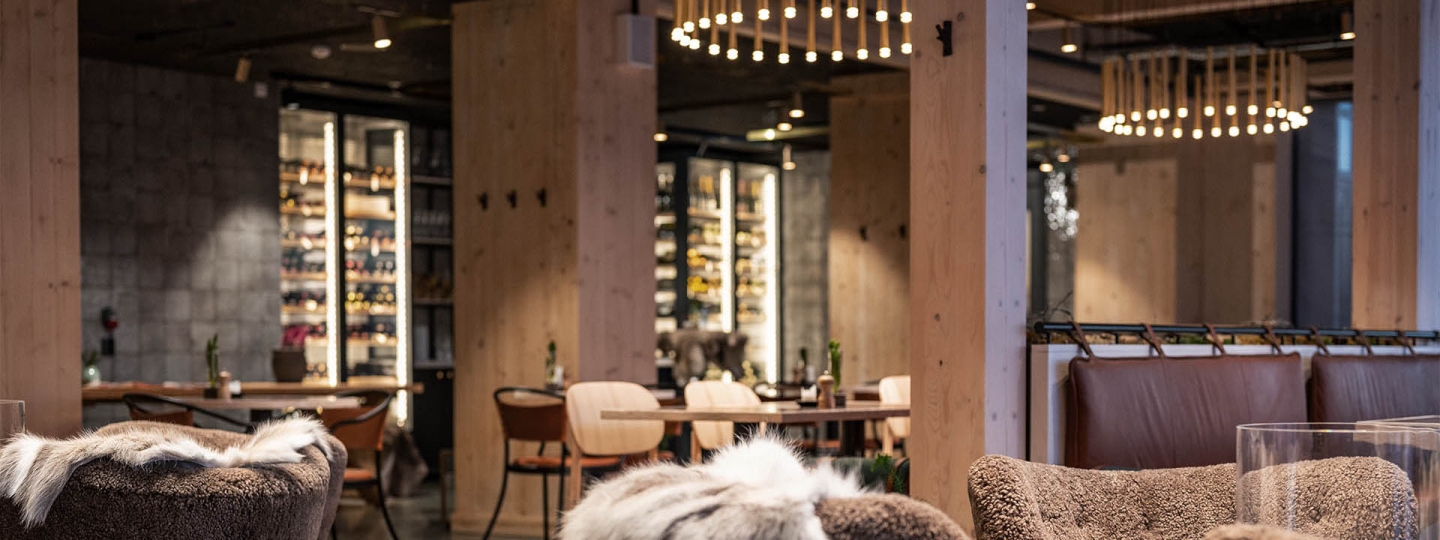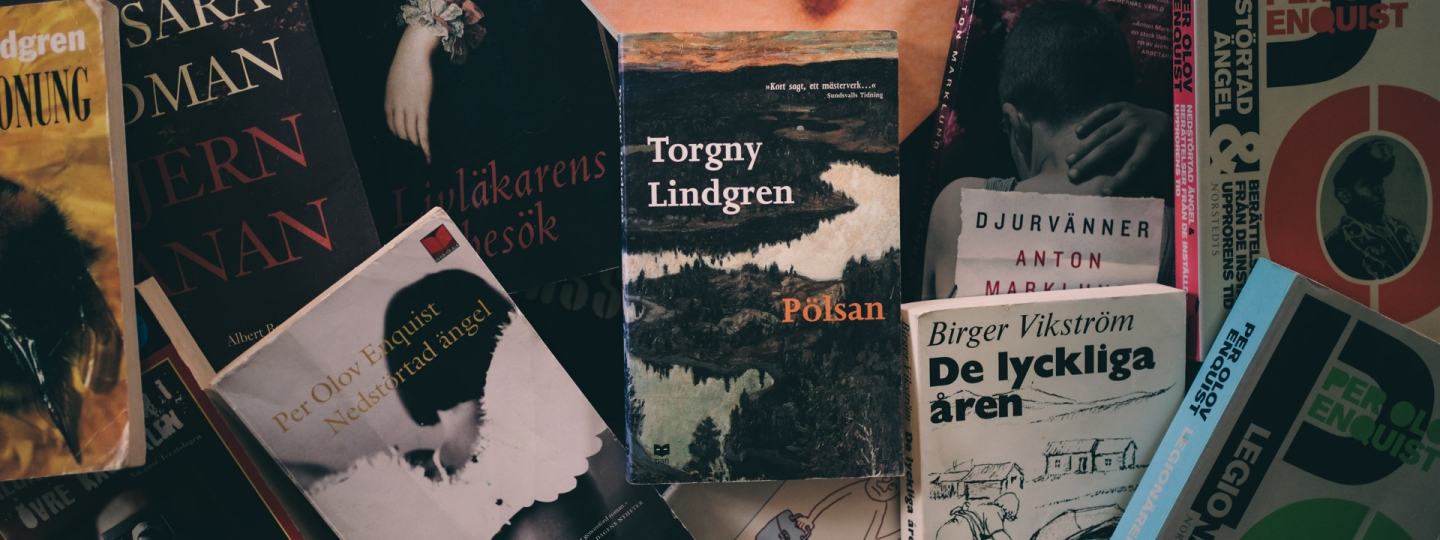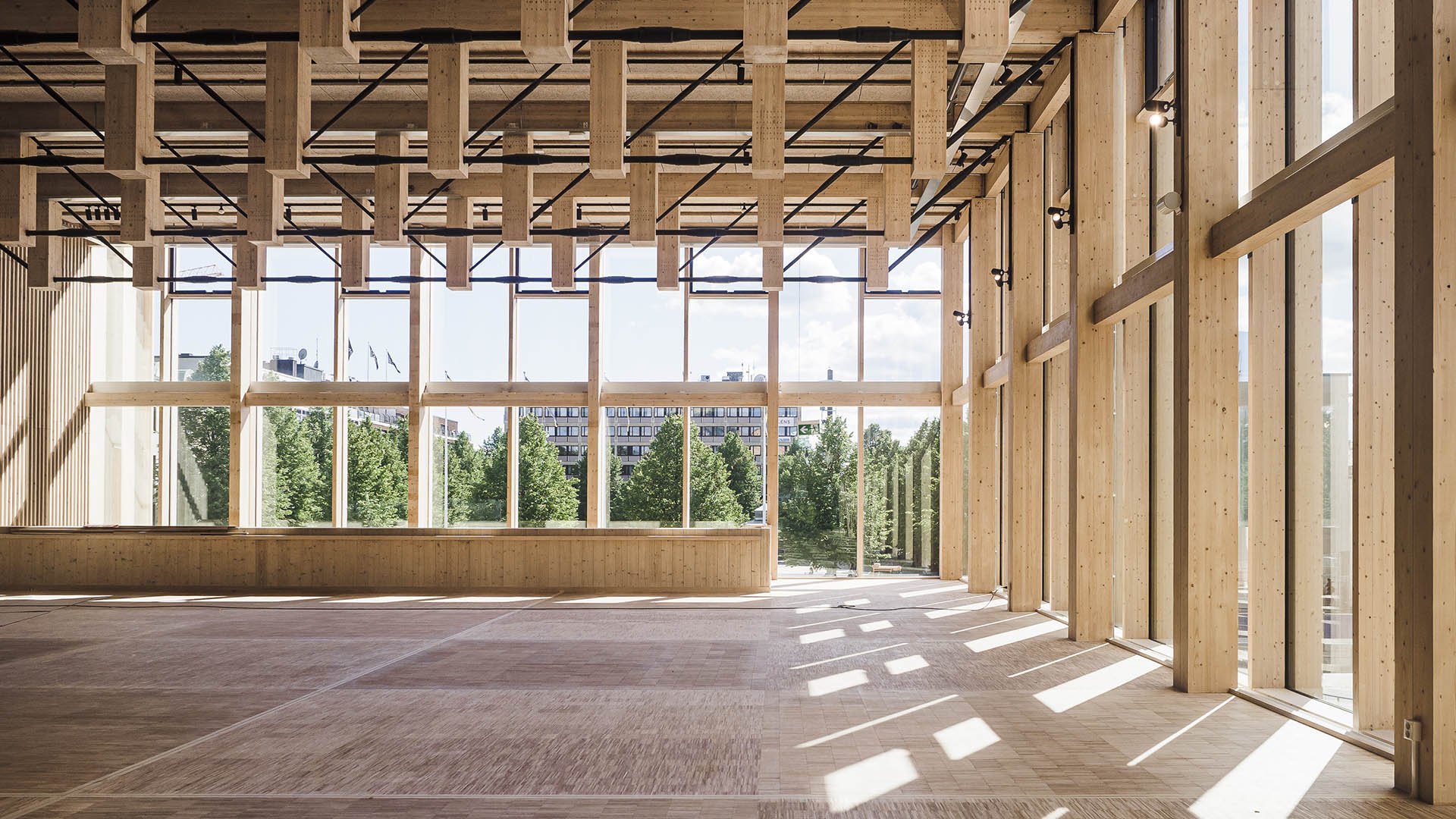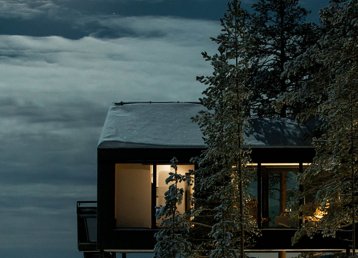Hotel manager David Åberg and restaurateur Carina Brydling are sitting in the magnificent staircase of Sara Kulturhus in Skellefteå. The newly build cultural center that’s part of the entrance to The Wood Hotel by Elite. They haven’t had much time to sit down since the hotel was inaugurated, on October 14, 2021. And perhaps there hasn’t been much time to laugh about either.
“That’s true, it was really hectic here in the beginning,” David says.
“There are many who have opened hotels and even more who have managed hotels, but no one has opened The Wood Hotel by Elite in Skellefteå. It was all new, like everything, and to be honest with you, we were a bit surprised by the huge demand.”
“We had done all sorts of calculations. We were counting on 50% occupancy – that’s pretty good for a city hotel. But we’ve had double that for times, which changes things completely. Twice the number of rooms to clean, twice the amount of food to cook, and trying to recruit staff during a pandemic in a booming town like Skellefteå…” David shakes his head.
“Yes, we’re lucky to be able to sit here for a moment and rest,” says Carina and they both laugh again.
Creating a landmark
Sara Kulturhus and The Wood Hotel by Elite together make up this building in the center of Skellefteå, a small town on the Västerbotten coast. A city that’s been constantly in the news of late, in connection with the green transition. Media from all over the world have come here to report on the Northvolt battery factory, but the truth is that innovative solutions for the future have been created here for decades by artists, agencies, and entrepreneurs. This new building is the next thing to talk about. Lately, Sara Kulturhus and The Wood Hotel have won prizes and awards for their ground-breaking architecture and sustainable design. Architects Robert Schmitz and Oskar Norelius, together with their team at White Architects, have created one of the most talked-about houses in northern Europe. The directive from Skellefteå Town was quite simple: Create a landmark for Skellefteå!
“Frankly, I think that is what we delivered,” says Robert.
But just as important, as it was for the building to stand out and be award-winning, it was also essential for Sara Kulturhus and The Wood Hotel to become a meeting place for residents and visitors of Skellefteå, while taking construction technology further, well, into the future really.
Also read
A night at the museum“The entire structure, based on its construction, management, and service life, will be carbon neutral – or even positive – after 50 years. That’s something unheard of for a building of this size,” says Oskar Norelius.
It wasn’t just the sustainability perspective, new for a building this size, the entire thought process around the construction was new.
“The most difficult challenge, throughout the whole process, was actually convincing those involved that it was possible to build something that never had been built before.”
Award-winning architecture
The building is often called Sara Kulturhus in international media because the experience hotel is connected to Skellefteå’s new cultural center Sara. As mentioned above, it has won many prizes and awards. Renowned American lifestyle magazine Travel + Leisure was the latest: Global Vision Awards 2022, and before that the building was number one on the list of the best architecture of 2021 published by British newspaper the Guardian. According to the Guardian’s architecture and design critic, Oliver Wainwright, the ‘plyscraper’ – plywood skyscraper – is a “20-storey beacon of pine and spruce”. The project has also won several prizes in architectural contests. Even before it was finished, from 2018 onwards, the project received rewards and nominations, including the MIPIM Future Project Award, and at the International Design Awards (IDA) in Los Angeles, where White architects won a bronze medal for the building.
So yes, we can certainly say that White architects delivered a landmark, and to top it off it’s made from spruce and pine growing in the area around Skellefteå.

Talked-about
Architects Robert Schmitz and Oskar Norelius, together with their team at White Architects, have created one of the most talked-about constructions in Sweden.
A timber town
One morning I take a walk along the route known as the ‘tour around the bridges’. From the hotel, I first cross the square and head down through the park to the river, then over the bridge to the south side of the Skellefteå River that runs through town. I follow the river upstream until I return to the north side again, this time crossing on the bridge Lejonströmsbron. This is Sweden’s oldest preserved wooden bridge; it’s been here since 1737 and is also one of Sweden’s longest wooden bridges.
Also read
A place to preserveAfter that, I turn downstream, back again to the hotel where the walk takes me past Bonnstan where wooden houses from the past make for a picturesque and homely atmosphere. Skellefteå has a strong tradition as a timber town. Woodwork, sawmills and carpentry, house building and bridge building – it all came naturally to this part of Sweden, surrounded by forest. So, it was also completely natural that it was Skellefteå that dared to build something that had never been done before, but where the raw material was deeply ingrained in the town’s DNA. It was also in line with the creativity already in place, and an attitude that led the Guardian’s critic to call Skellefteå a “miraculous eco-town”.
Restaurant Mandel
The fourth floor of The Wood Hotel houses the restaurant Mandel, one of the restaurants Carina Brydling oversees. In the same way, as Skellefteå’s DNA as a forestry town has influenced the building, traditions and DNA have influenced the menu at Mandel. Dialectal wonders such as Paltschwimmen, Hovendroven, and Sovel are boldly served (and kindly explained). In a cultural town such as Skellefteå, of course, there is proper pölsa (a little like haggis) on offer here. Torgny Lindgren was a well-known author from Västerbotten and in his perhaps best book, called Pölsan, he writes the following: “My pölsa… is very simple. There’s pölsa that’s much better. And there’s pölsa that’s pretty much the best. Then there’s also pölsa that’s supreme.” Which one do you think they serve here at Mandel?
“Yes, of course I think people in the north have a different relationship with pölsa than people who live in the south. In the north, it was served at school, but it wasn’t in Bålsta near Stockholm where I grew up.”
“Now pölsa, just like haggis in Scotland, has become fashionable.”
“Or perhaps that’s the wrong way of putting it. It’s more like it’s the entire Nordic cuisine that’s become fashionable. All of a sudden, our food traditions are the future. A bit like using wood for high buildings,” says Carina Brydling.
What’s Pölsa?
In the old days, pölsa was made out of intestines and meat that was not good enough for anything else. An old Swedish dish called lungmos (lung mash) is sometimes referred to as a forerunner of pölsa. Iconic Swedish chef Tore Wretman said that ”lungmos is a Swedish food treasury”. An important aspect is, of course, the nose-to-tail philosophy. To take care of and prepare the whole beast. Intestines and any other detail on the animal that was not possible to do much with, other than to boil it in bouillon with barleycorn, made it as pölsa. In today’s dish, like the one served at The Wood Hotel, you barely see the difference between pölsa and any other slow cooker. Traditionally you present it with boiled potatoes, fried eggs, and pickled beets. Some folks also love their pölsa with some pieces of fried bacon.
Meant to be
Carina’s own journey to becoming food and beverage manager at The Wood Hotel wasn’t straightforward, but it feels like it was meant to be when she tells me about it. Having written several recipe books and being part of Kocklandslaget, the successful team of Swedish Chefs, as well as well-known restaurants, life was knocked slightly sideways at the beginning of the pandemic. All of a sudden there was a sudden expectation in the family that they would move north. And soon, there she was, with a villa in central Skellefteå and no steady job as such.
“Yes, I thank my lucky stars for the day when I heard Carina had moved to Skellefteå and perhaps needed a job,” says David and smiles.
“Yes, perhaps I should do that as well,” she says and they laugh.
David had never been a hotel manager before. Sure, he’d worked for more than 20 years in the business known as the service profession. But there’s a difference between being a consultant and working on assignments to being the one taking full responsibility for a hotel project unlike anything previously created. Carina hadn’t worked with hotels either, even if she’d worked with excellent restaurants. There is, however, a difference between serving food in a restaurant with 24 seats, and one with 240.
“It’s a huge difference, for sure, but at the same time I’m glad we can let the same local food philosophy infuse everything we do, regardless of the size.”

Book recommendation
Sometimes Skellefteå is referred to as Berättarnas stad (The city of Storytellers). An epithet due to the annual Berättarfestivalen and the region being home to writers like P O Enquist, Sara Lidman (whom Sara Kulturhus is namned after) and Torgny Lindgren. In 2002 Lindgren’s book, Pölsan, was released. A story about the search for the ultimate Pölsa. An obvious read while staying at The Wood Hotel.
Amazing fusion
At Mandel this evening I have tartar for starter, where the lightly cured elk and the blueberries are paired with a blueberry wine from Idunn in Norsjö. It feels like they were made for each other. The wine continues to surprise me as my pölsa arrives. It’s in every way a part of the new Skellefteå, or the entire destination that markets itself as Swedish Lapland, even if these traditions are nearly ancient. Using everything on the animal, from nose to tail, to make a pölsa or to ferment blueberry wine in the sunshine – also a tradition in the north. But, at Mandel, the chefs have taken it a step further.
Also read
The way we eatThe Wood Hotel by Elite is one of the world’s tallest wooden buildings: 20 floors, 205 rooms, a spa and three restaurants are all housed in this building that towers up 75 metres into the sky above Skellefteå. The view from Vana Spa on the 20th floor (Vana actually means forest in Sanskrit – speaking of The Wood Hotel) or from the bar at Miss Voon on the 19th floor, is spectacular. The town rests at the feet of the building, under northern lights or midnight sunshine, amidst bottles or sake and amazing fusion to savour. Sashimi made from reindeer and Swedish beef meet Asia among tuna, hamachi and scallops, with sauce bowls featuring flavours of soy, coriander, piri-piri, mint, and kimchi mayonnaise. A rich dining experience showcasing the philosophy that Jonas Svensson has created with Miss Voon. Although neither scallops nor sake feel very “Skellefteå” I can’t help thinking that right here, on the 19th floor of a hotel the like of which has never been seen before, it’s the perfect combination.































